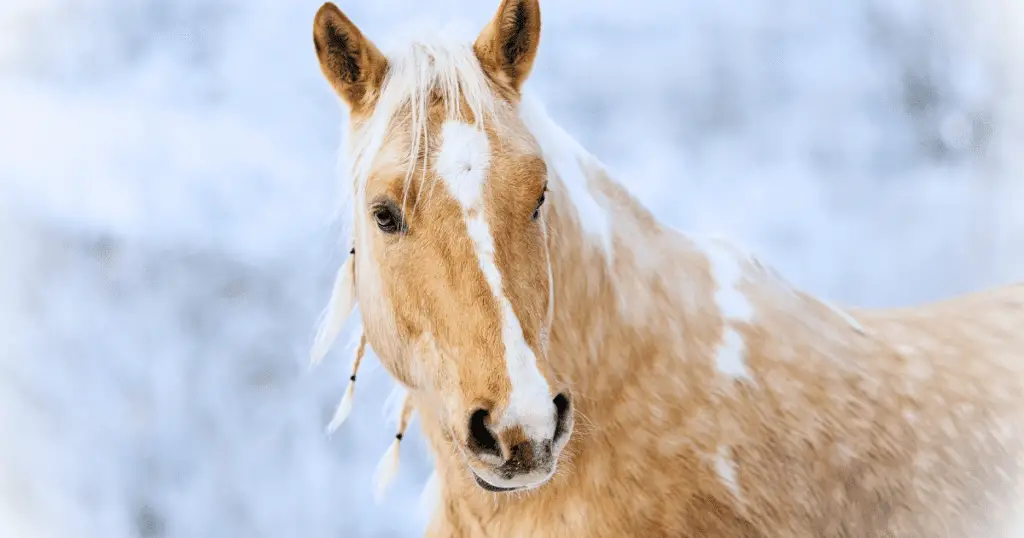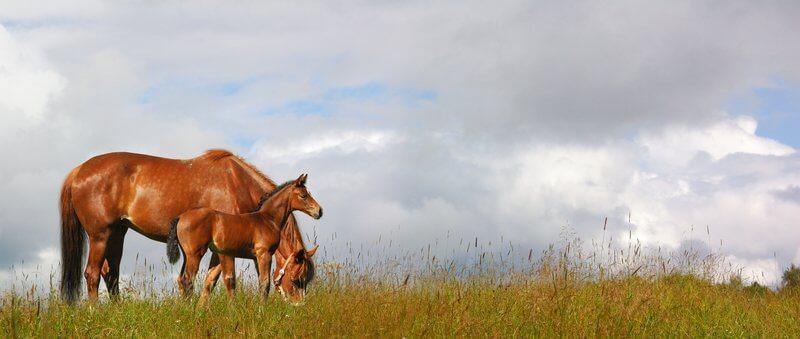
As a horse owner, one of the most important decisions you will make is when and how to wean your foal. Weaning is the process of separating a foal from its mother and transitioning it to a diet of solid food. This can be a stressful time for the foal, the mother, and you the owner, so it’s important to approach it with care and consideration.
So, at what age should you wean your foal? The answer depends on a variety of factors, including the health and growth of the foal, the mother’s milk production, and the availability of solid food. In general, most foals are weaned between four and six months of age, but some may be weaned earlier or later depending on their individual needs. It’s important to consult with your veterinarian and observe your foal’s behavior and growth to determine the best time to wean. Another important factor is considering the foals immune system as it is not mature enough to mount an immune response on its own until 3-4 months of age.
Once you’ve decided on a weaning age, it’s important to plan the process carefully to minimize stress and ensure a smooth transition. There are several methods of weaning, including gradual weaning, abrupt weaning, and partial weaning. Each method has its own advantages and disadvantages, so it’s important to choose the one that works best for your foal and your situation. With proper planning and care, weaning can be a positive experience for both the foal and the mother.
When to Wean Your Foal
As a horse owner, I know that weaning a foal can be a difficult process. It’s important to consider several factors before deciding when to wean your foal. In this section, I will discuss the factors to consider and signs that your foal is ready to be weaned.
Factors to Consider
There are several factors to consider when deciding when to wean your foal:
- Age of the foal
- Health of the mare and foal
- Time of year
- Feeding schedule
- Behavior of the foal
It’s important to take all of these factors into account before making a decision about when to wean your foal.
Signs Your Foal is Ready to Wean
There are several signs that your foal is ready to be weaned:
- The foal is eating solid food
- The foal is no longer nursing as frequently
- The foal is showing interest in other horses
- The mare is starting to lose weight or become agitated when the foal tries to nurse
If you notice these signs, it may be time to start the weaning process.
How to Wean Your Foal
Gradual Weaning Process
This process involves slowly reducing the amount of milk the foal receives from its mother over a period of several weeks. It is important to monitor the foal’s weight and behavior during this process to ensure it is adjusting well to the reduced milk supply.
Here is an example of a gradual weaning process:
| Week | Amount of Milk |
| 1 | 75% of normal |
| 2 | 50% of normal |
| 3 | 25% of normal |
| 4 | No milk |
Abrupt Weaning Process
If you choose to use an abrupt weaning process, it is important to be prepared for the potential stress and behavioral issues that may arise in the foal. This process involves completely separating the foal from its mother and removing all milk from its diet.
Here are some tips for an abrupt weaning process:
- Make sure the foal has access to plenty of hay and water
- Monitor the foal closely for any signs of stress or discomfort
- Consider using a companion horse to help ease the transition
Weaning with a Companion Horse
Weaning with a companion horse can be a great option for foals who may have difficulty adjusting to being separated from their mother. This process involves introducing a companion horse to the foal during the weaning process.
Here are some tips for weaning with a companion horse:
- Choose a companion horse that is calm and well-behaved
- Introduce the companion horse to the foal slowly and carefully
- Monitor the foal and companion horse closely for any signs of aggression or stress
Post-Weaning Care
After weaning your foal, it is important to provide appropriate care to ensure their health and development. Here are some important aspects to consider:
Monitoring Your Foal’s Health
It is crucial to monitor your foal’s health after weaning. Keep an eye on their weight, body condition, and behavior. Make sure they are eating and drinking properly, and that their manure is normal. If you notice any signs of illness or discomfort, contact your veterinarian immediately.
Adjusting Your Foal’s Diet
After weaning, your foal’s diet will need to be adjusted. They should be gradually transitioned from a milk-based diet to solid food. Provide high-quality hay and a balanced concentrate feed. Consult with your veterinarian or equine nutritionist to determine the appropriate diet for your foal’s age, breed, and activity level.
It is important to avoid overfeeding your foal, as this can lead to obesity and other health problems. Offer small, frequent meals throughout the day, and monitor their weight and body condition regularly.
Training Your Foal
After weaning, your foal will need to learn how to live independently and interact with other horses. Provide them with plenty of socialization opportunities, such as turnout with other foals or adult horses. Gradually introduce them to new environments and experiences, such as trail rides or horse shows.
Start training your foal to lead, tie, and stand for grooming and veterinary care. Use positive reinforcement techniques, such as treats and praise, to encourage good behavior. Avoid using force or punishment, as this can cause fear and aggression.



